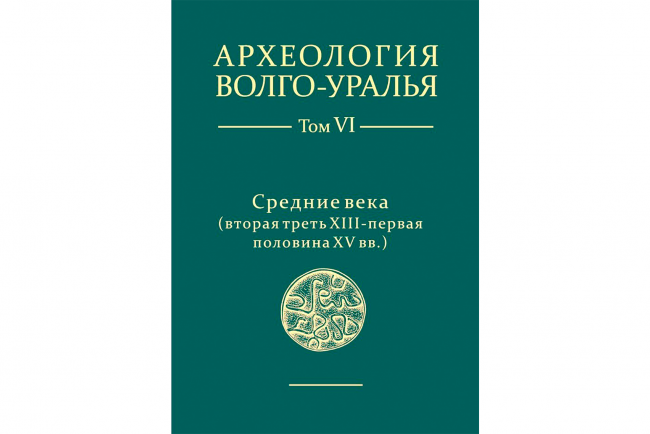The researcher's essay, published in the seven-volume book Archeology of the Volga-Urals, is devoted to the analysis of the study of archaeological sites of the Golden Horde period located in the Vyatka River basin
Institute of Archeology. A.A. Khalikov of the Academy of Sciences of the Republic of Tatarstan published a seven-volume academic publication "Archaeology of the Volga-Urals", the preparation of which has been carried out since 2016. The team of authors included about 100 researchers. These are leading archaeologists from major scientific centers and universities in Kazan, Moscow, Ufa, Izhevsk, Samara, Yoshkar-Ola, Cheboksary, Saransk, Astrakhan, Syktyvkar, Kirov.
The seven-volume edition "Archaeology of the Volga-Urals" presents a modern academic view of more than a century and a half of experience in archaeological research in one of the most significant and unique historical and cultural areas of the Eurasian continent. The study allows us to take a fresh look at archaeological data and make them the basis for a comprehensive reconstruction of the history of the population of the Volga-Ural region from antiquity to the early modern period.
To date, "Archaeology of the Volga-Urals" is the largest project of the Academy of Sciences of the Republic of Tatarstan, -
noted the Vice-President of the Academy of Sciences of the Republic of Tatarstan Daniya Zagidullina at the presentation of the first three volumes of the publication last year.
Aleksey Kaisin, head of the archaeological research laboratory of Vyatka State University, became one of the authors of the sixth volume. This volume is a generalization of archaeological information about the past of the Volga-Ural region in the second half of the 13th – early 15th centuries, that is, the period of formation and prosperity in this territory of the Ulus of Jochi (Golden Horde).
"This is the first academic publication that combines materials from the developed Middle Ages, obtained over more than 200 years of field and analytical research on all types of archaeological sites of the era under study from the Volga delta to the taiga zone of the Urals. The collective scientific work is of interest not only for archaeologists, but also for specialists in other historical disciplines, as well as for everyone interested in the medieval history of the Volga region and the Urals" -
Alexey Kaisin commented.
Essay by A.O. Kaysina is devoted to the analysis of the study of archaeological monuments of the Golden Horde period located in the Vyatka River basin. Briefly characterizing the written source base, the author dwells in more detail on the stages of archaeological study of the region, the beginning of which dates back to the end of the 18th – beginning of the 20th centuries. To date, 45 archaeological sites of different categories are known, left by the ancient Russian population in the 12th – 15th centuries. Among them, the author mentions unfortified settlements and hillforts, burial grounds, funeral rites and material materials of which reflect the period of transition of ritual from paganism to Orthodoxy.
Paying great attention to the analysis of finds, Alexey Kaysin describes various categories of things, including industrial, household and fishing equipment, weapons, horse and rider equipment, jewelry, cult attributes, ceramics and others. Clothes materials allow us to speak about the beginning of the development of the Middle Vyatka basin by the Russian population at the end of the 12th – beginning of the 13th centuries. The author states the presence of a noticeable group of imported items: coins, household items, ceramics. The place of their production - both in pre-Mongol times and in the Golden Horde - was Volga Bulgaria and the Lower Volga region.
Summarizing the above, it should be noted the significant scientific contribution of Vyatka State University researchers in summarizing the accumulated archaeological knowledge and presenting the scientific community with the most modern view of the early history of the region.

